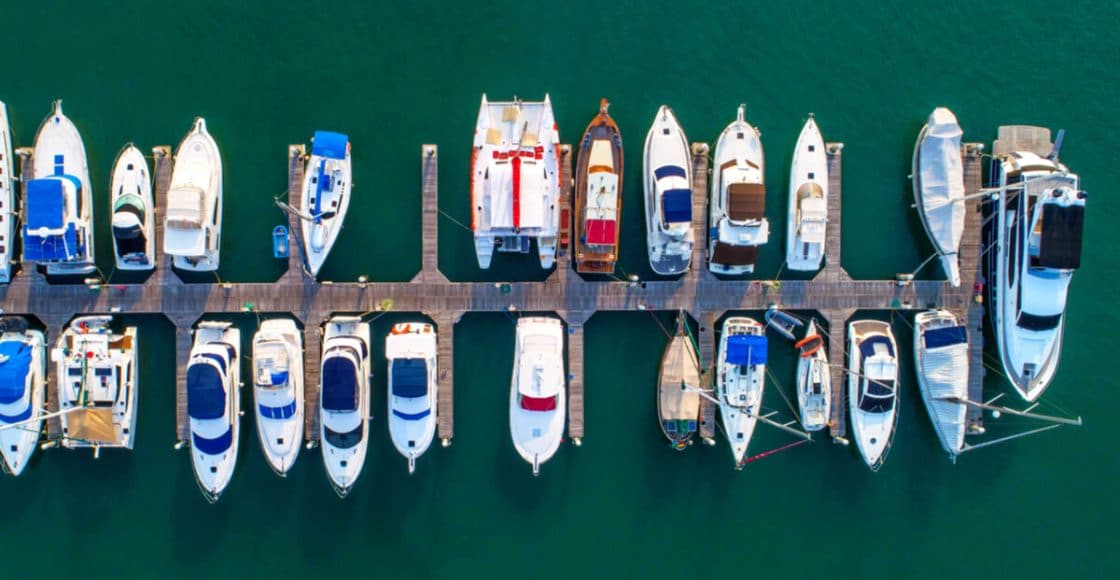

Yachts vs. Boats: What are the Differences?

Table of Contents
Last Updated on April 13, 2022 by Boatsetter Team
Many people use the words “boat” and “yacht” interchangeably, and some lean on the latter to make their ride sound more impressive. But what are the key differences between boats and yachts?
First, let’s look at some broad definitions of a boat, a yacht, and other related vessels.
- “Boat” can refer to just about any kind of vessel— towboat , fishing boat , center console , houseboat , and so on.
- “Dinghy” designates a small boat with a human or wind means of propulsion including a rowing dinghy or sailing dinghy. It also refers to a tender to a bigger boat or yacht.
- “Ship” is a large commercial boat, often used for distance travel and transport of goods or passengers – cruise ship, container ship, etc.
- “Yacht” is typically a larger boat with luxury amenities used as a recreational vessel— motor yacht , sailing yacht .
- “Superyacht” is a large yacht and is often also called a mega yacht . The delineation used to be at 80-feet but again, with today’s size creep, anything under 100 feet would just simply be called a yacht.
So, yacht or boat? Let’s dive deeper into the elements that differentiate a boat from a yacht.
Own a Boat or a Yacht? Learn How to Offset the Cost of Ownership by Listing on Boatsetter
Size of the Vessel
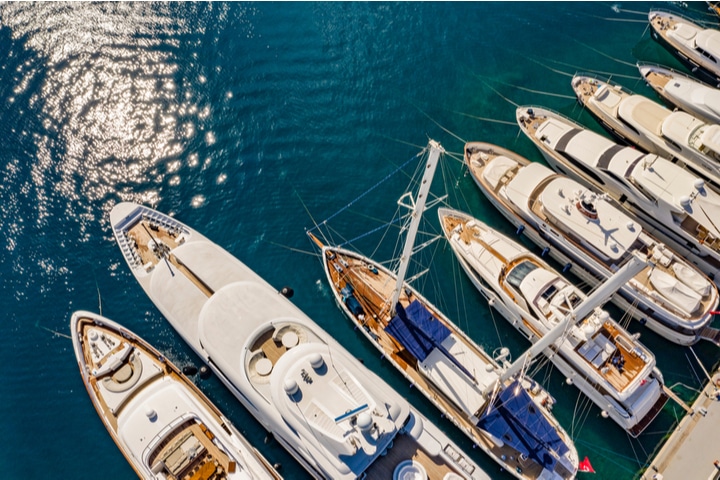
Some place a hard line at 35 feet. Below that, you have a boat and above, it’s a yacht. However, that’s an artificial differentiator.
Just 30 years ago, a 30-foot boat was considered large and could have been a yacht but as recreational boats grow longer, the term yacht has been pushed up the scale.
That said, a well-kept 40-foot boat designed for recreation can technically still be called a yacht (although larger vessels are likely to cost more, price isn’t a good indicator of yacht status primarily because it fluctuates with brand, age, and amenities).
Check out local yacht rentals near you to understand how size plays a difference.
What it’s Used For
A yacht is a vessel designed for recreational purposes. It generally operates on open waters (rather than small lakes or rivers) and has accommodations for overnight guests.
A cruise ship, on the other hand, accommodates a large number of passengers in a commercial setting whereas a yacht carries a smaller number (of paying or non-paying) passengers for private recreation.
Onboard Technology
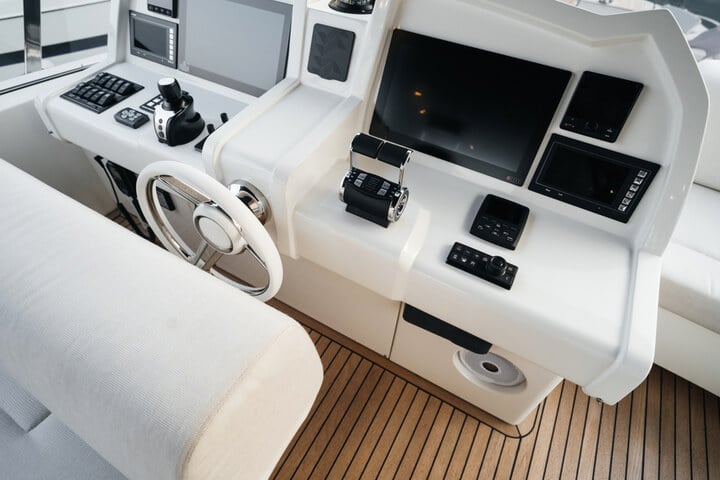
Advanced technology for navigation, communications, and system operation as well as redundant systems for safety can be found on a yacht that is likely to venture farther.
Again, there are caveats because today’s towboats that are fun day boats also feature technology such as GPS and digital switching that integrates many electrical and electronic features.
Propulsion Types
This is a tricky one. “Yacht” comes from the Dutch word “jaght” which referred to a sailing vessel that was used by the navy to capture pirate ships and later for recreation by the affluent.
Today, a yacht can be a large sailing vessel or a motor yacht. All larger yachts will have a motor for propulsion whether they have sails or not. Sailboats by design have smaller motors so trying to put a horsepower minimum on yacht propulsion is simply inaccurate.
Some define a yacht as having multiple crews to operate the vessel and tend to passengers or guests. The larger the yacht, the more crew will be required to navigate, maintain and service the vessel. That said, a couple who owns a 50-footer can call their boat a yacht although it’s owner-operated.
Luxury and Amenities
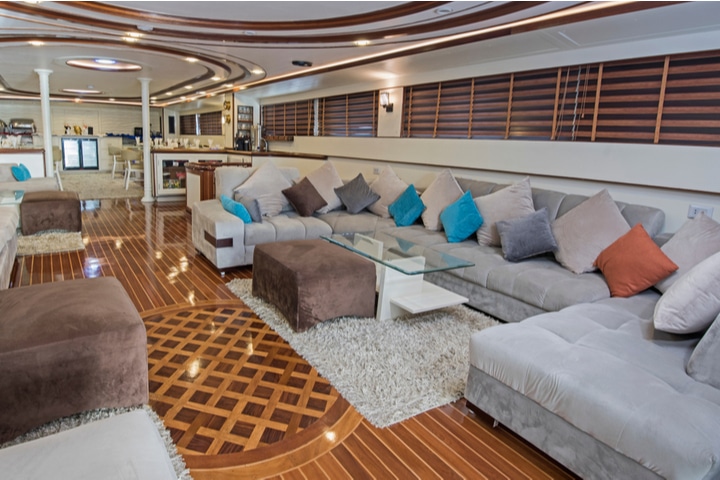
This is perhaps the best measure of a yacht. If the vessel offers accommodations, a galley , a head , and is luxurious in its presentation, it’s most likely a yacht.
That said, there are lots of center console fishing boats and towboats that are pretty nicely equipped these days and they wouldn’t be called a yacht.
All yachts are boats, but not all boats are yachts—and the lines are blurry. The word yacht elicits images of posh seafaring experiences while a boat evokes ideas of fun and perhaps work. Do some research to learn what size and type of boat or yacht is best for you .
To a degree, the point at which a boat becomes a yacht is in the ear of the beholder but if you focus on size, amenities, and the type of use, you’ll be able to discern the difference. Then all that remains is to find a way to spend time and have fun on any kind of vessel.
Browse All Available Boat & Yacht Rentals Across the Globe

Zuzana Prochazka is an award-winning freelance journalist and photographer with regular contributions to more than a dozen sailing and powerboating magazines and online publications including Southern Boating, SEA, Latitudes & Attitudes and SAIL. She is SAIL magazines Charter Editor and the Executive Director of Boating Writers International. Zuzana serves as judge for SAIL’s Best Boats awards and for Europe’s Best of Boats in Berlin.
A USCG 100 Ton Master, Zuzana founded and manages a flotilla charter organization called Zescapes that takes guests adventure sailing at destinations worldwide.
Zuzana has lived in Europe, Africa and the United States and has traveled extensively in South America, the islands of the South Pacific and Mexico.
Browse by experience

Explore articles
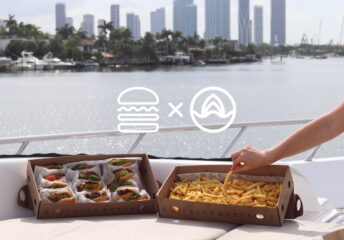
Set Sail with Shake Shack & Boatsetter with the Ultimate Labor Day Yacht Experience

5 Best Beaches in Boston
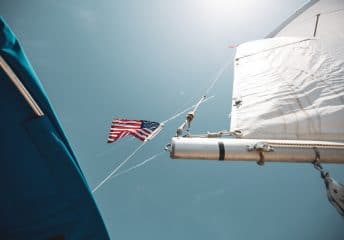
Fourth of July Boating Tips: Planning, Safety & Fireworks

Boatsetter Celebrates International Women's Day: The History and Future of Women in Boating
What is the Difference Between a Boat and a Yacht?
Key differences between ‘boats’ and ‘yachts’.
Boats and yachts are two different types of watercraft normally used for a range of recreational and commercial activities. Whilst people tend to use these terms interchangeably, there are numerous distinct differences between a boat and a yacht. There are six main differences that you should bare in mind when looking at boats or yachts , to help you gain the best understanding.


6 Differences Between Yachts and Boats
The first key difference between a boat and a yacht is their size. A yacht is typically bigger than a boat and whilst there is no strict definition of what a yacht is, the general consensus is that if it is over 40 feet in length, it is usually considered a yacht. Boats can also vary in size, starting from small dinghies to larger motorboats or ferries but as a whole are definitely smaller than yachts.
Typically, boats are used for more recreational activities including fishing, cruising and watersports. As well as this, they can be used for commercial use and transportation with cargo or ferries. This is why boats that aren’t ferries or cargo tend to have a smaller, more simplistic design. Each boat is designed specifically so they function for their activities. On the other hand, yachts are usually used for cruising, entertainment and pleasure. They are designed with a more aesthetic design in order to enhance the experience of passengers.
3. Luxury Features
Another factor that easily sets boats and yachts apart are their luxury facilities. In general, boats do not have luxury facilities and whilst they might have an underdeck area, this will only be small and not include any kind of ‘luxuries’. Yachts however are usually equipped with multiple luxury features including spacious cabins, full kitchens, multiple bathrooms, swimming pools, hot tubs, television systems and in some cases, even helipads. These are purposefully designed to heighten the onboard experience of passengers.
One thing you should expect to see when comparing yachts and boats is a difference in cost. Because boats are fit for a smaller, more simplistic purpose you should expect these to cost less than a yacht. You could, on average, buy a boat ranging from a few thousand pounds right up to £700,000 but a yacht would come at prices from about £100,000 to £10,000,000 . This is for many reasons including the size, purpose and functionality of a yacht compared to a boat.
5. Maintenance
Whilst it is important to consider the costs of buying a boat or a yacht , it is also important to consider the upkeep that is going to come with that. In general, a yacht requires more maintenance than boats due to them being larger and having more complex systems. They would require specialised cleaning, regular upkeep of their facilities including swimming pools, hot tubs, rooms etc and regular servicing of their mechanical systems. Boats would still need to undergo upkeep, but not to the extent that a yacht would. As a result, the price and work level are usually lower for boat maintenance .
6. Engine Power
The last difference to note between boats and yachts is the power of their engines. There are a lot of boats that won’t even have an engine, it could range from a small boat requiring manpower to operate to larger boats using wind and sails to move. Boats that do have an engine can reach quite high speeds and run for some periods of time, but their engine capacity is not comparable to a yacht. A yacht engine tends to be more powerful overall, which allows them to travel through rougher water and travel for very long periods of time.
Should I Buy Myself a Boat or a Yacht?
It is important to do your research about the boat or yacht you are looking to buy in order to make sure you are getting the watercraft fit for your purpose. If you are looking to partake in watersports or short trips, a boat is definitely more suitable for you. However, if you are looking for a more luxurious travel style then a yacht may be the one for you.
If you are looking to sell or buy, Clipper Marine might be the perfect option for you. We have experience selling a range of yachts and boats and can offer our expertise when setting the asking price, marketing the boat to potential buyers.
Clipper Marine Mailing List
- Charter info
Yacht vs. Boat: Know the Key Differences

When you think of cruising on the water, the terms "boat" and "yacht" often come to mind, but have you ever wondered what sets these two types of vessels apart? While both serve as a means to enjoy water travel, relaxation, or even luxury, the difference between boat and yacht goes beyond just size and price.
Today’s article we prepared as Guletyacht will explore the various distinctions between the two, shedding light on factors like size, function, and amenities. Whether you are considering purchasing one or simply curious, understanding the boat and yacht difference can help clarify which is better suited for your needs.
What are the Differences Between a Boat and a Yacht?
The primary difference between boat and yacht lies in size, function, and luxury. A boat is a general term for smaller watercraft, typically used for fishing, recreational purposes, or short-distance travel. On the other hand, a yacht is a more specific term that refers to larger, more luxurious vessels, often used for leisure, extended travel, or as a status symbol.
Here are some key points to consider:
Size : Yachts are generally larger, starting at around 30 feet, while boats can vary in size but are typically smaller.
Purpose : Boats are often used for recreational or practical purposes like fishing or day trips, while yachts are associated with luxury, long-distance travel, and entertainment.
Amenities : Yachts often have high-end features such as multiple decks, cabins, and state-of-the-art technology, while boats are usually simpler in design.
Size Comparison: Yacht vs. Boat vs. Ship
While the terms boat vs yacht are often debated, it`s important to also mention ships. Ships are much larger than both boats and yachts and are typically used for commercial purposes like transporting goods or passengers across long distances.
Boat : Generally small to mid-sized vessels used for personal or commercial purposes, such as fishing, leisure, or water sports. These can range from 10 feet to about 30 feet in length.
Yacht : A luxury vessel used for leisure and entertainment, ranging from 30 feet to over 100 feet. Yachts are built with comfort and long-term travel in mind.
Ship : A large watercraft designed for transporting goods or people. Ships are typically over 100 feet long and can be massive, especially those used in commercial industries.
Features and Functions: What Sets a Yacht Apart?

When you think of yacht charter , consider that the difference between boat and yacht is not just about size; it’s also about the level of luxury and the purpose of the vessel. Yachts are designed to provide a lavish experience on the water, often featuring multiple decks, cabins, and even crew accommodations.
Luxury Amenities :
Yachts often feature amenities like a full kitchen, multiple sleeping quarters, living rooms, entertainment systems, and sometimes even hot tubs or pools.
Boats, depending on their size, tend to have fewer amenities. They might have a small cabin or a simple galley but are often more utilitarian.
Crew and Operation :
Large yachts often require a professional crew to operate and maintain them, whereas boats are usually small enough to be managed by the owner or a small team.
Yachts are also built for long-distance travel and can handle extended stays at sea, while boats are typically used for short trips and day excursions.
Yacht vs. Boat: Cost Considerations

Another key difference between boat and yacht is cost. Yachts are typically much more expensive than boats, not only due to their size but also because of the luxurious features they offer.
Boats : Can range from a few thousand dollars for a small fishing boat to several hundred thousand for a larger recreational vessel.
Yachts : Start at around $100,000 for smaller models and can reach into the millions for larger, custom-built luxury yachts. Additionally, the cost of maintaining and operating a yacht is significantly higher than that of a boat.
What Makes a Boat a Yacht?
A common question that arises is, "What makes a boat a yacht?" The answer typically boils down to size and function. A boat is considered a yacht once it reaches a certain length, usually around 30 feet or more, and offers amenities and features that go beyond the basics. Yachts are often designed for luxury and longer stays on the water, while boats are generally simpler and used for more practical purposes.
Boat vs Yacht: Which One is Right for You?

If you’re deciding between a boat or yacht , the decision will likely come down to your intended use and budget.
Boats are great for individuals or families looking for an affordable way to enjoy the water for short trips, fishing, or water sports. They’re easy to maintain and don’t require a large crew to operate.
Yachts , on the other hand, are perfect for those who want to travel longer distances in style, entertain guests, and enjoy high-end amenities. They’re a significant investment, both in terms of purchase price and ongoing maintenance, but they offer an unmatched luxury experience.
The difference between boat and yacht is significant when it comes to size, luxury, and purpose. While both are watercraft, yachts are typically larger and offer more amenities for leisure and long-term travel. Boats, on the other hand, tend to be smaller and more utilitarian, suited for recreational or short-distance trips. Whether you’re considering purchasing a vessel or just curious about the distinctions, knowing the boat yacht difference can help guide your decision and enhance your understanding of these iconic forms of transportation.
- We're proud to represent the finest charter gulet yachts and have over 15 years experience in doing so. Our expert team ensures that charters are professionally handled from start to finish for the charterers.
- Let us know your requirements so we can assist in finding you the perfect yacht.
- We call you
- Enquiry Form
Request for Proposal
Looking for.
By submitting this form you agree to our privacy and cancellation policy.

IMAGES
VIDEO